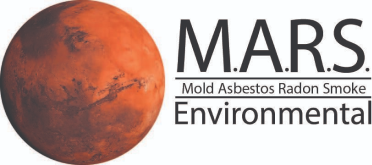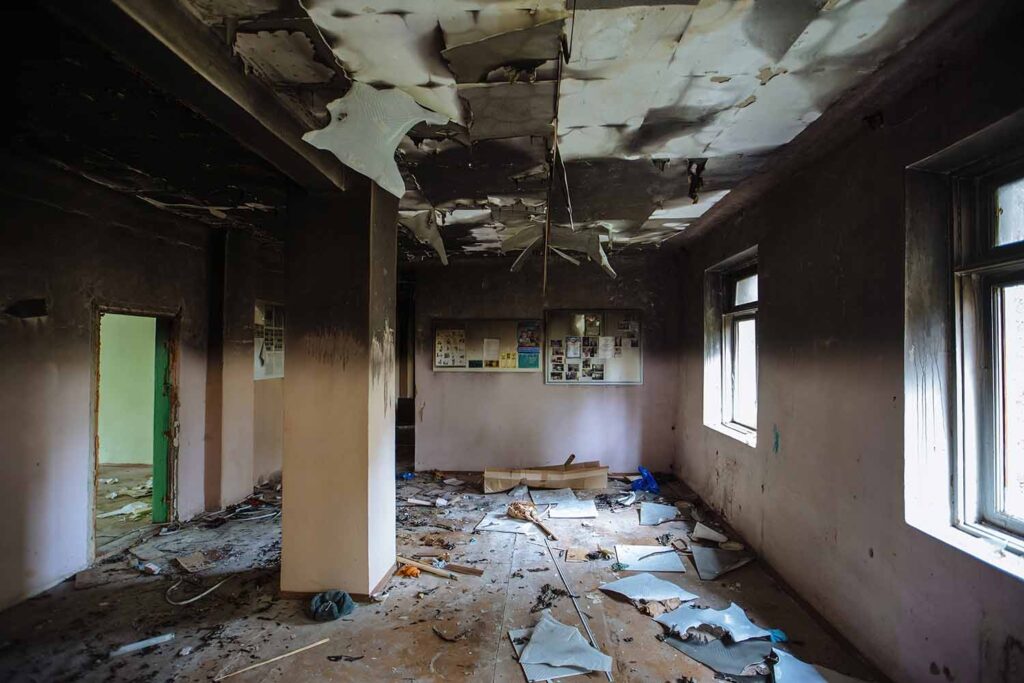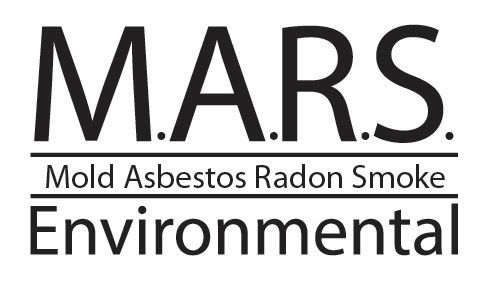In this article, Jeanine Humphrey, post-fire testing specialist and owner of M.A.R.S. Environmental in Lafayette, shares how a routine basement water cleanup ended in a preventable fire and whole-house damage. Learn what went wrong, how M.A.R.S. identified the necessary testing and remediation steps, and what you can do to prevent a similar disaster.
The Background: How the Fire Started
When a Longmont homeowner discovered a sewage backup in her basement, she did the right thing. She called a professional remediation contractor to remove the contaminated water and dry out the space.
But because the water made it unsafe to use the basement’s electrical outlets, the contractors ran multiple extension cords from the basement to the main floor laundry room’s dryer outlet to power the dehumidifiers and blowers.
Later that night, the homeowner was alerted by her security system that the smoke alarms were going off. The fire department responded and discovered a fire had broken out in the laundry room and spread to the hallway and powder room next door.
What went wrong?
- The contractor misused a 220v to 120v converter on a dryer outlet.
- Multiple devices were plugged into a single outlet via long extension cords.
- These unsafe practices – which violated basic electrical safety standards – overloaded the outlet, causing the extension cords to overheat, and ignited a fire.
Pro Tip: If something a contractor is doing doesn’t seem right, trust your instincts. Speak up and ask questions – it could save your home. If the contractor tries to shirk your questions, that’s a major red flag. Don’t hesitate to walk away.
The Aftermath of the Contractor-Caused Fire
The fire caused visible damage to the laundry room, hallway, and powder room, but the smoke damage was far more widespread. It infiltrated the entire home, contaminating drywall, HVAC systems, and all soft goods – carpets, furniture, drapes, mattresses, and clothing – which act like giant filters for smoke. The fire had turned a localized problem into a whole-house health hazard.How We Helped
The homeowner called the M.A.R.S. team for post-fire smoke and soot testing to assess the damage and determine the necessary remediation work.
Our testing process included:
- Initial walkthrough: We suited up in PPE and completed a walkthrough inspection to map fire origin and smoke migration patterns and identify critical areas for testing and contamination.
- Client consultation: Outside of the home, we discussed with the client what we saw, the extent and type of testing we recommended, and next steps (including NOT removing anything from the home).
- Comprehensive testing: We completed the recommended scope, including:
- Tape-lift sampling for soot, char, and ash (tape lift has the best collection efficiency and is preferred in most cases)
- CAM 17 wipe sample testing for heavy metals (lead, arsenic, cadmium, beryllium, etc.)
- Testing for fire retardant chemicals
- Indoor air quality testing, including hydrogen cyanide air testing
- Anion panel testing for electronic corrosivity (because a dryer & deep freezer were impacted)
- Structural integrity assessment – deciding which walls needed to be opened up & examined
- Full VOC panel
What We Found & Advised:
- The fire retardant used during firefighting had introduced additional toxic chemicals into the home.
- All soft goods were non-salvageable.
- Walls that would need to be opened up to determine structural integrity.
- The home could not be safely reoccupied without professional clearance.
Pro Tip: Hire a professional who knows the testing that needs to be done for different types of fires/burn areas. For example, while this inspection didn’t require lithium (e-battery) chemical testing or soil expansion corrosion assessment, others do. Ask questions about what testing they’re doing and why – and don’t be afraid to get a second opinion.
How to Prevent This From Happening to You: Tips for Vetting Contractors
Even legitimate contractors can make dangerous mistakes. Here are a few steps you can take when hiring a contractor to protect yourself and your home:
1. Ask for a Certificate of Insurance (COI). Every contractor should provide one. If they use subcontractors, they should have a COI for them, too. If they’re not insured and something goes wrong, you could be held financially responsible.
2. Request certifications. Ask what certifications they hold and whether they’re up to date.
3. Ask who’s actually doing the work. Subcontracted work can vary in quality and accountability. Check the credibility and experience of any subcontractors, too.
4. Check reviews & references. Google reviews can be helpful, but check other places as well: DORA, BBB, and the CDPHE (or your local equivalent). Ask for references and follow up with their past clients. Ask people you know for recommendations of companies they’ve used.
5. Don’t just go with your insurance’s preferred vendor. Vet multiple providers and compare, thoroughly researching their credibility and certifications.
6. Think ahead & ask smart questions. What’s the scope of work? What could go wrong – and how would you handle it? How do you document everything for insurance and liability? Asking detailed questions up front protects you from surprises later.
Pro Tip: A legitimate, transparent company will allow – and even encourage – thorough vetting. If a contractor can’t (or won’t) provide proof of insurance, certifications, and references you need, that’s a sign to keep looking.
Hiring Help After a Fire: What to Know
After a fire, it’s essential to bring in experts who understand how to detect and safely remove toxic residues. Post-fire damage can include:
- Combustion byproducts (soot, ash, char)
- VOCs (volatile organic compounds)
- Heavy metals and toxic chemicals
- Firefighting chemical residues
- Electronics & battery chemicals
Ask your post-fire remediation company for all the same things you’d ask of a contractor: a COI, proof of certification & experience, information about subcontractors, and references. In addition, look for a company that has:
- IAQ Specialists with fire-specific remediation experience
- Science-based testing methods & clearance requirements that meet or exceed all state & local regulations
- Full transparency about their procedures and how they determine what is and isn’t salvageable
At M.A.R.S., “the bare minimum” isn’t in our vocabulary. We conduct thorough, science-backed testing to ensure your home is free from harmful carcinogens and truly safe for your family. All of our testing is certified, insured, and backed by industry standards.
Key Takeaways
- Carefully research all contractors & post-fire professionals. Read reviews & verify references, even if referred by insurance.
- Ask questions. And then ask some more. Anyone you hire should be able to (and happy to) answer any questions about their credentials, methods, and insurance documentation.
- Don’t rush back in. If you experience a fire, don’t move back into your home or take anything out of it until it’s been thoroughly tested and cleared by a post-fire remediation specialist.
Accidents aren’t completely avoidable, but preventative measures and prompt action – including thoughtful hiring and rigorous testing – can mitigate long-term damage to your home and your family’s health.


